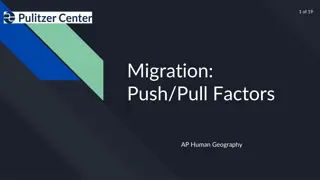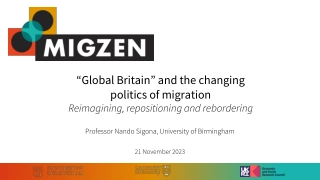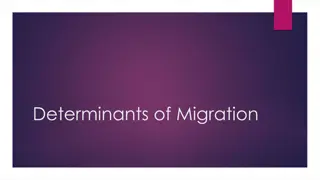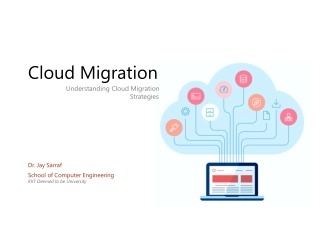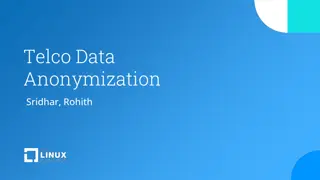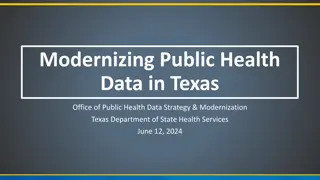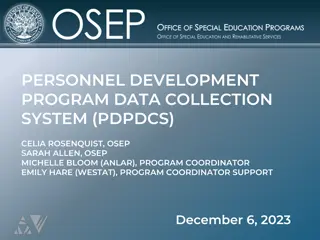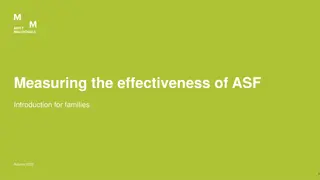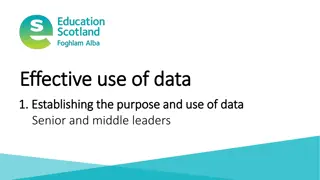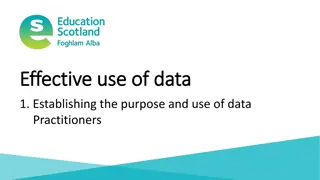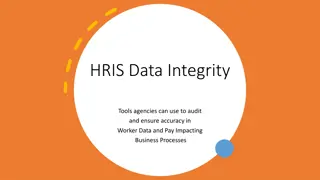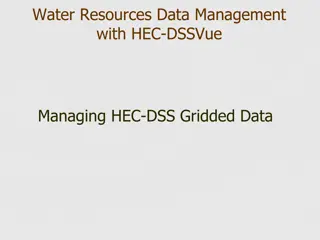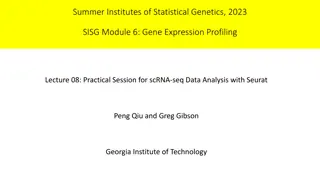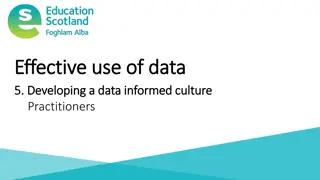Data Migration Strategies, Tools, and Techniques
Data migration is a critical process for organizations looking to modernize their IT infrastructure, improve efficiency, and leverage new technologies. This guide will walk you through the essential strategies, tools, and techniques for a successful data migration project.
Download Presentation
Please find below an Image/Link to download the presentation.
The content on the website is provided AS IS for your information and personal use only. It may not be sold, licensed, or shared on other websites without obtaining consent from the author. Download presentation by click this link. If you encounter any issues during the download, it is possible that the publisher has removed the file from their server.
Presentation Transcript
The Ultimate Guide to Data Migration: Strategies, Tools, and Techniques Data migration is a critical process for organizations looking to modernize their IT infrastructure, improve efficiency, and leverage new technologies. This guide will walk you through the essential strategies, tools, and techniques for a successful data migration project. 1. Understanding Data Migration What is Data Migration? Data migration involves transferring data between different storage types, formats, or systems. It is often a necessary step when upgrading or consolidating systems, moving to a cloud environment, or changing databases. Types of Data Migration Storage Migration: Moving data from one storage system to another. Database Migration: Transferring data between database systems. Application Migration: Shifting data and application functionalities to a new environment. Cloud Migration: Moving data, applications, and services to a cloud platform. 2. Planning Your Data Migration Setting Objectives Define clear objectives for your data migration project. What do you aim to achieve? Common goals include improved performance, cost savings, enhanced security, or better data integration. Assessing the Source and Target Systems Understand the source data's structure, format, and volume, and ensure compatibility with the target system. This assessment will help identify potential challenges and necessary transformations. Risk Management Transform data into the destination system's needed format.Develop a risk management plan to mitigate these risks through backups, validation processes, and contingency plans. 3. Choosing the Right Data Migration Tool Key Features to Look For Compatibility: Ensure the tool supports your source and target systems. Scalability: Choose a tool that can handle your data volume and complexity. Automation: Tools with automated features reduce manual intervention and errors. Security: Data encryption and compliance with regulatory standards are crucial.
Popular Data Migration Tools Ask On Data: The premier Data Migration Tool, for seamless and efficient data transfer. Fivetran: Known for its ease of use and automated data pipeline creation. Microsoft Data Migration Assistant: Ideal for migrating to SQL Server or Azure SQL Database. AWS Database Migration Service: Supports migration to and from Amazon databases. Hevo Data: Offers real-time data migration with minimal setup. 4. Data Migration Strategies Big Bang Migration A one-time migration event where the entire data set is moved at once. This approach is faster but riskier due to potential downtime and data loss. Trickle Migration Involves a phased approach, migrating data in stages. This reduces risk and allows for continuous operation, but the process is longer and more complex. 5. Data Migration Process Data Profiling Analyze the source data to understand its structure, quality, and any necessary transformations. Data Cleansing Identify and correct errors, duplicates, and inconsistencies in the source data to ensure accuracy and quality. Data Transformation Transform data into the destination system's needed format.This may involve reformatting, deduplication, or data enrichment. Data Loading Transfer the transformed data to the target system. Ensure proper validation and testing to confirm data integrity. Testing and Validation Conduct thorough testing to verify that data has been accurately and completely migrated. Use validation tools to compare source and target data. 6. Post-Migration Activities Monitoring and Maintenance Continuously monitor the new system to ensure it is functioning correctly. Address any issues that arise promptly. Documentation and Training Document the migration process and provide training to users on the new system to ensure smooth adoption.
7. Best Practices for Data Migration Plan Thoroughly: Detailed planning reduces the risk of unexpected issues. Automate Where Possible: Automation tools minimize manual errors and speed up the process. Validate Continuously: Regular validation ensures data integrity throughout the migration. Communicate Clearly: Keep all stakeholders informed to ensure alignment and address concerns promptly. Conclusion Data migration is a complex but essential process for modernizing IT infrastructure and improving organizational efficiency. By understanding the different types of migrations, planning effectively, choosing the right tools, and following best practices, you can ensure a successful data migration project. For more detailed information and resources, visit Ask On Data.


